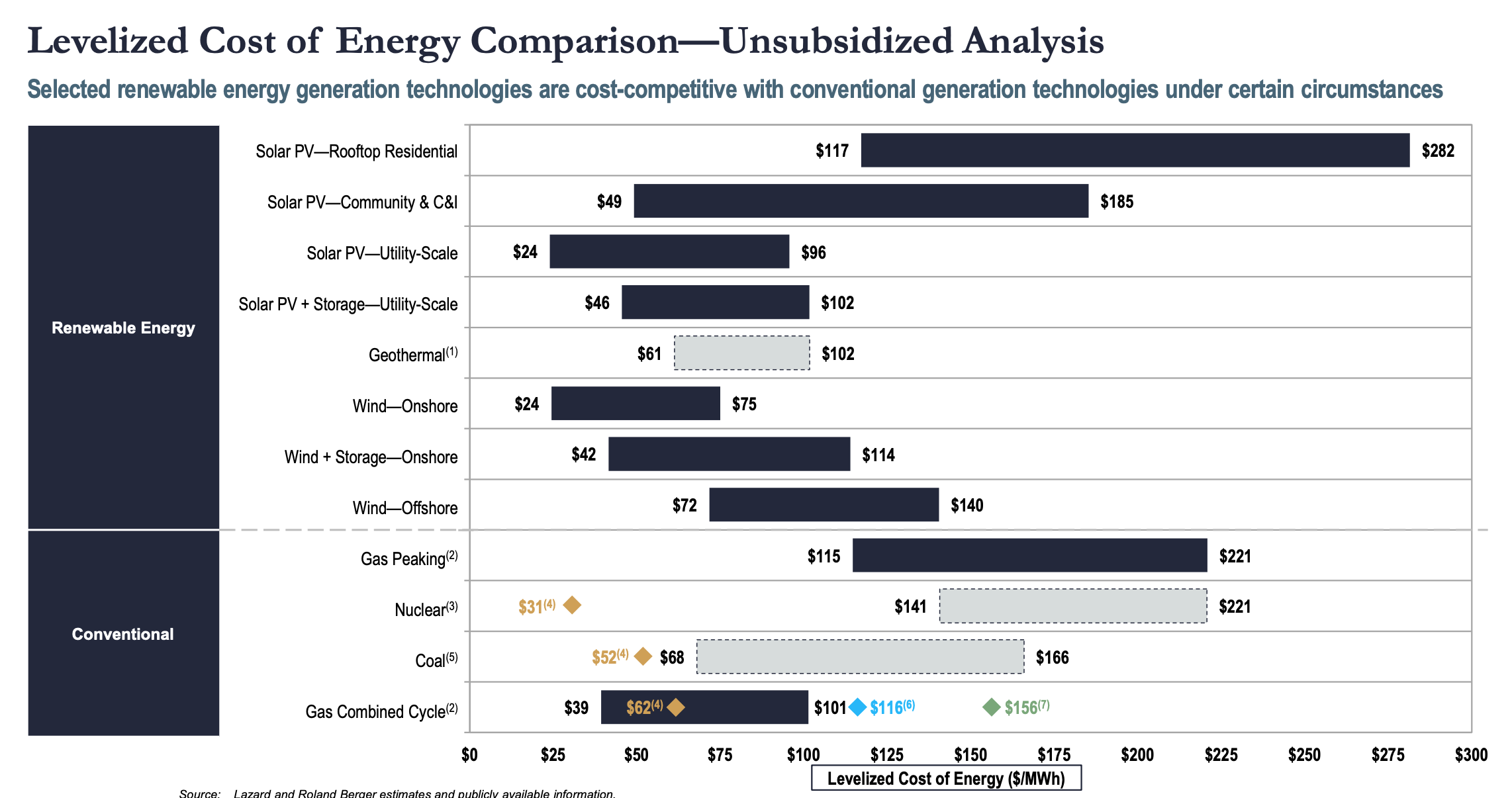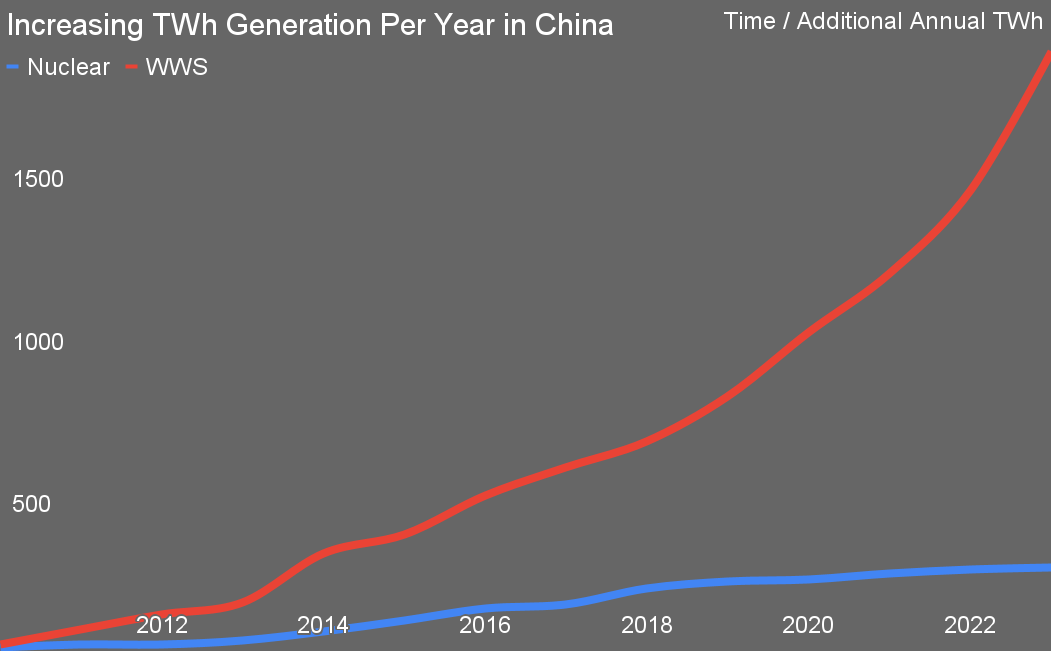Sign up for daily news updates from CleanTechnica on email. Or follow us on Google News!
Many power-to-x firms and energy exporting companies are looking at Japan especially, but also other hydrocarbon light countries as a great market to send ammonia to as an energy carrier. That’s not going to end well. Why not?
Let’s start with ammonia itself. It’s hydrogen and nitrogen. The nitrogen doesn’t have any energy that can be released but constitutes 82% of the mass of the substance. Only 18% is hydrogen, the stuff that has energy we can tap into by burning it or putting it through fuel cells.
How do we make it today? We use natural gas, mostly. We burn some of it to make steam, then put more of the natural gas into the steam. The energy in the steam breaks the carbon and hydrogen in the natural gas apart. Most of the carbon grabs onto oxygen from the air and becomes carbon dioxide, a greenhouse gas. Then we strip the 78% of nitrogen out of the air we breath and put the hydrogen and nitrogen into a Faber Bosch pressure cooker to make them bond into ammonia.
The carbon dioxide greenhouse gas problem is in addition to the leakage of the natural gas from the inverted Christmas of gizmos and sensors in the top of the natural gas well, through the venting from pipes and storage bins, and the general leakiness of the entire system. The problem with that is that natural gas is mostly methane and it’s a much more potent greenhouse gas than carbon dioxide, about 29 times worse over 100 years, and a lot more on shorter timeframes.
But we can make hydrogen without natural gas. That requires that we break apart water into oxygen and hydrogen with low-carbon electricity, and grab the hydrogen before it escapes. Then we repeat the bit with the air, nitrogen and the pressure cooker.
It’s more expensive to do it this way, and it always will be, but it’s reasonable to assume we’ll get it down, under very specific circumstances, to only twice the cost of ammonia made when we are allowed to treat the atmosphere as an open sewer. I’ve done the cost work up for Quebec, for example, where a blended energy and maximum power US$0.049 per kWh price of low-carbon electricity that’s available 24/7/365 can achieve this remarkable feat. It’s going to be hard to beat 100% available 4.9 cents per kWh, and organizations pretending otherwise really need to check their math and assumptions carefully.
So assuming we make ammonia for perhaps $800 per ton in Quebec or some similar number in other jurisdictions, we then can liquify it by chilling it to -33° Celsius and putting on tankers to cross the ocean to Japan or some other country. There are obvious concerns like its toxicity and the cost of shipping, but we have ammonia tankers, about 66 of them, crossing oceans today. It’s probably going to cost another $100 to liquify and ship the gas, and some profit as well, bringing it to perhaps $1,000 per ton.
I looked at studies related to shipping ammonia, and it’s reasonably cheap to do, unlike shipping liquid hydrogen. The studies tend to ignore anyone making money on the process, but that’s easy to add in.
Is that unreasonable in this best case scenario? Maybe.
Let’s start with the cost of what Japan is doing now, for the most part, burning coal. Coal costs about $105 per ton these days on the spot market, and costs about $15 per ton to ship, a lot cheaper than ammonia. Add 10% for profits and you are looking at $130 per ton. It only has about 6.7 MWh of heat energy in it, a fifth of hydrogen. When you burn it in boilers, you only get about 2.2 MWh out of it. There are operational and maintenance costs too. A reasonable assumption is that Japan’s coal plants are fully amortized.
Calling it $100 per MWh fully loaded costs wouldn’t be off much. That’s about 10 cents per kWh for the cost of making electricity, effectively the wholesale price.

That’s in the midpoint of the range for unsubsidized coal generation when Japan is importing coal. Might be a bit higher, might be a bit lower, but let’s use it.
How does the price of energy from imported ammonia compare?
A ton of ammonia has 0.18 tons of hydrogen. That $1,000 ton of ammonia turns into $5,556 per ton of hydrogen. A ton of hydrogen has an energy value of 33.3 MWh, but that’s how much heat you get out of it. If you are Japan and want to burn it with coal in coal plants, you only get 11 MWh out of it. Remember, only the hydrogen portion of ammonia has any energy, so when you burn it, that’s the only energy you get.
That’s more energy, sure, but at a much higher cost and more expensive handling. The five times as much energy per ton costs 8.6 times more per unit of energy to manufacture and deliver. $100 per MWh for coal turns into $860 per MWh per ammonia, just with the cost of delivered energy.
Then you have to account for handling ammonia, which unlike a lump of coal, will kill humans rapidly. It can’t be piled up outdoor and is expensive to truck around, so pipelines to the coal generation facility and -33° Celsius ammonia tanks at the facility have to be built, and the burners have to be modified to burn ammonia as well as coal. Let’s add $40 to the cost per MWh, making it a nice even $900.
This basic workup is just reality. There’s nothing magical about making ammonia from scratch, and doubling the cost of it compared to natural gas and Haber Bosch processes is giving that cost every benefit of the doubt. It’s actually going to be more expensive for every ton of hydrogen in the vast majority of cases, with three and four times the cost for the end ammonia product being very reasonable. Nine times the cost per MWh is probably the best possible case scenario for burning ammonia.
But wait, you say. They are intending to strip the hydrogen from the ammonia and put it through a fuel cell. That’s much more efficient!
Well, no. Mostly commercialized industrial processes to extract hydrogen from ammonia are about 85% efficient. That means that instead of 33.3 MWh of heat energy in hydrogen we’re only getting perhaps 28 MWh. But then we put it through a 60% efficient fuel cell and that turns into 17 MWh.
So our ton of hydrogen produces 15 MWh of electricity at a cost of $5,556. But that ammonia cracker won’t pay for itself and won’t power itself. Let’s make the cost $6,000 for the ammonia cracker capital and operational costs.
But the energy? Well, that’s going to come from the hydrogen. It takes about 0.4 MWh of electricity to crack that ammonia, so we’re down to 14.5 MWh of electricity that costs $6,000. That turns into about $420 per MWh.
Oh, and that hydrogen fuel cell is an expensive and failure prone piece of kit, much more so than burners under a big tank of water. The history of fuel cells in power generation is a history with a lot of expensive replacements and down time. I just did the cost workup for maintenance of fuel cell buses and hydrogen refueling stations in California based on publicly available data published by the US DOE about the efforts, and they are seeing 50% higher maintenance costs than for diesel buses, which are much more complex than coal boilers.
Doubling the cost of operations and maintenance compared to the existing coal plant is a very reasonable assumption. Per Carbon Tracker, the average US coal plant has maintenance and operation costs separate from coal costs of about $30 per MWh. Doubling that and adding it results in power that’s close to five times the cost of coal generation.
Once again, five times the cost is the best case wholesale scenario, and it’s likely higher in reality. Hydrogen Insights reported today that airlines are refusing to pay for synthetic e-fuels as current projects are coming with prices 10 times that of Jet-A. That’s the reality of making green hydrogen and then making synthesized chemicals like ammonia, methanol, diesel and kerosene with it. The basic physical limits of the universe make it expensive, and there’s no magic wand for that.
Okay, you’ll say, so the energy is more expensive. So what. We have to decarbonize, so we’ll pay the premium. Or at least Japan will. Oh, wait, Japan isn’t the only country in the world. Let’s play this out.
Japan is a major export economy, with 22% of its GDP coming from shipping cars, trucks, heat pumps and electronics to other countries. It competes with China, the USA, South Korea, European countries and increasingly Vietnam to sell into export markets globally, especially the affluent west, Australia, the Asian Tigers and now China. A major cost factor in exports of cars, appliances, electronics and the like is the cost of energy required to manufacture them.

Let’s take China. What’s it doing? Well, it’s building more renewables every year than the rest of the world combined. It’s building vastly more HVDC transmission than the rest of the world combined. It’s building vastly more pumped hydro grid storage as well, with 58 GW in operation and 365 GW in construction or planned by 2030. It’s moving steadily away from importing energy, with peak gasoline demand in 2023 per Sinopec.
What about Europe? Despite the failing delusion of the hydrogen roadmap and their dreams of importing hydrogen and derivatives for energy, they are building tons more renewables, lots of grid storage and extending HVDC interconnectors in all directions. Hydrogen for energy projects are failing to reach final investment decision by the bucket load, with only 0.2% of hydrogen power-to-x proposals by tonnage reaching operational status in late 2023, and the IEA pointing out that only 7% of green hydrogen efforts required for 2030 are in any way solidly likely. Europe is electrifying and building renewables, whether everyone there realizes it or not.
Ditto the USA. Despite the IRA and the wasteful expenditures on hydrogen for energy that come with it, it’s going to electrify and make most of its energy with renewables as well.
And renewable electricity is cheap. It’s never going to be free. I’ve been working through my position on this as I poke at the question, and I’m trending toward grid average retail rates for electricity of $100 per MWh cost for end consumers in 2022 dollars. Some jurisdictions will be cheaper, some more expensive, but that will be where it averages out, I think. I need to do more modeling on it and look at more projection studies before I’ll be more firm. There will be strong time of use billing that will enable processes that can operate intermittently to do so, but that’s not power-to-x facilities that need to commit to delivery and amortize expensive kit.
Regardless, $100 per MWh vs Japan’s $500 to $900 per MWh. Everything that requires energy to manufacture in Japan won’t be competitive with anything built in renewables-heavy countries. So Japan’s economy will fall apart and its GDP will plummet. Then it won’t be able to afford to import ammonia and won’t need the energy. There’s no pathway for a country to base its economy on importing ammonia or any other green hydrogen derivative as an energy carrier that doesn’t end in economic failure for them.
Does this mean that Japan and similar countries are out of luck? No, of course not. Japan has massive offshore wind potential in the shallow waters of the Sea of Japan and Tsushima Strait, massive geothermal resources and is an easy HVDC cable stretch to Russia, China and South Korea to share renewable and nuclear generation sources across long distances. It has its own nuclear fleet as well which it’s restarting.
That it’s taking seriously the idea of importing green hydrogen directly — and that’s much more expensive than shipping ammonia, by the way — or in derivative form instead of building renewables and HVDC is indicative of a deeply irrational perspective which can’t last. It will either figure it out and thrive, or won’t figure it out and turn into an economic basket case. Those really are the only choices. Any energy pathway that doesn’t lean into electrification, renewables and HVDC will be more expensive than the alternatives.
Have a tip for CleanTechnica? Want to advertise? Want to suggest a guest for our CleanTech Talk podcast? Contact us here.
Latest CleanTechnica TV Video
I don’t like paywalls. You don’t like paywalls. Who likes paywalls? Here at CleanTechnica, we implemented a limited paywall for a while, but it always felt wrong — and it was always tough to decide what we should put behind there. In theory, your most exclusive and best content goes behind a paywall. But then fewer people read it!! So, we’ve decided to completely nix paywalls here at CleanTechnica. But…
Thank you!
CleanTechnica uses affiliate links. See our policy here.




